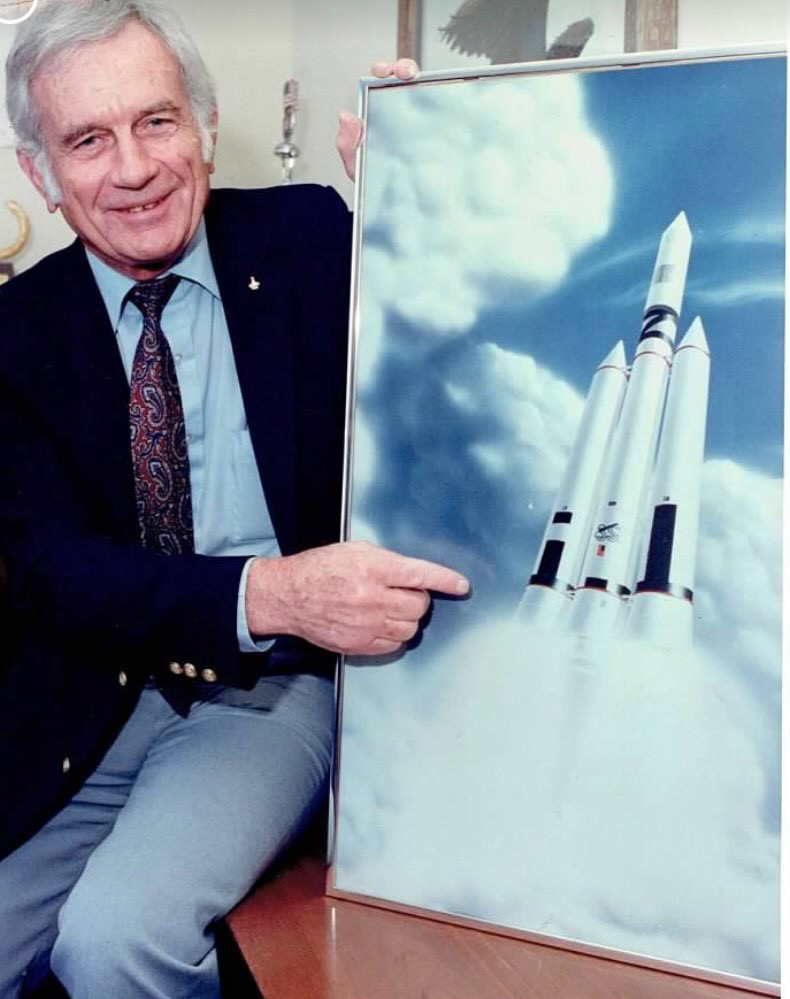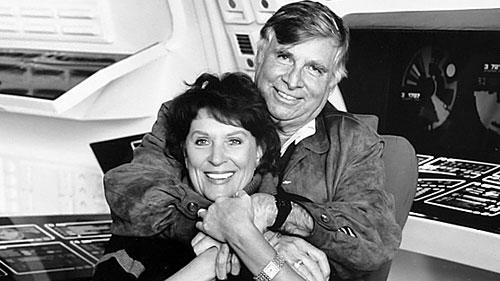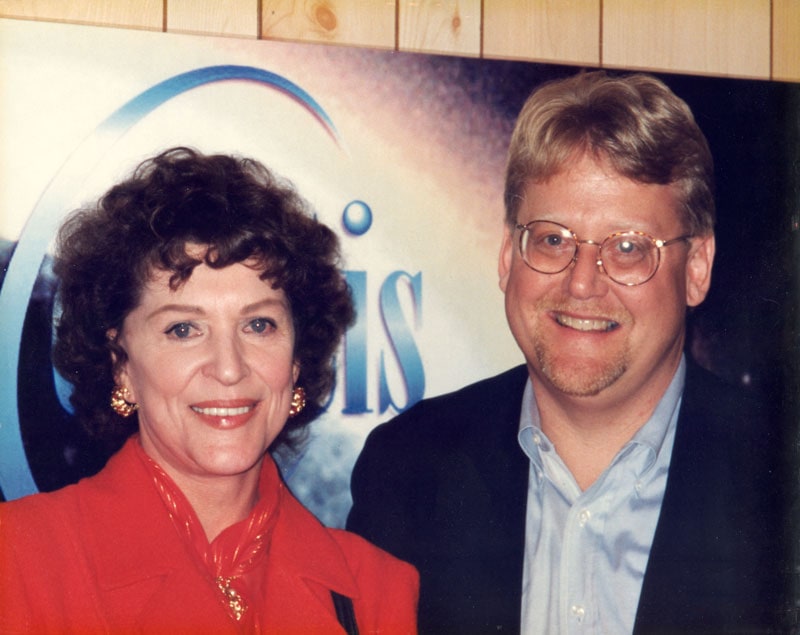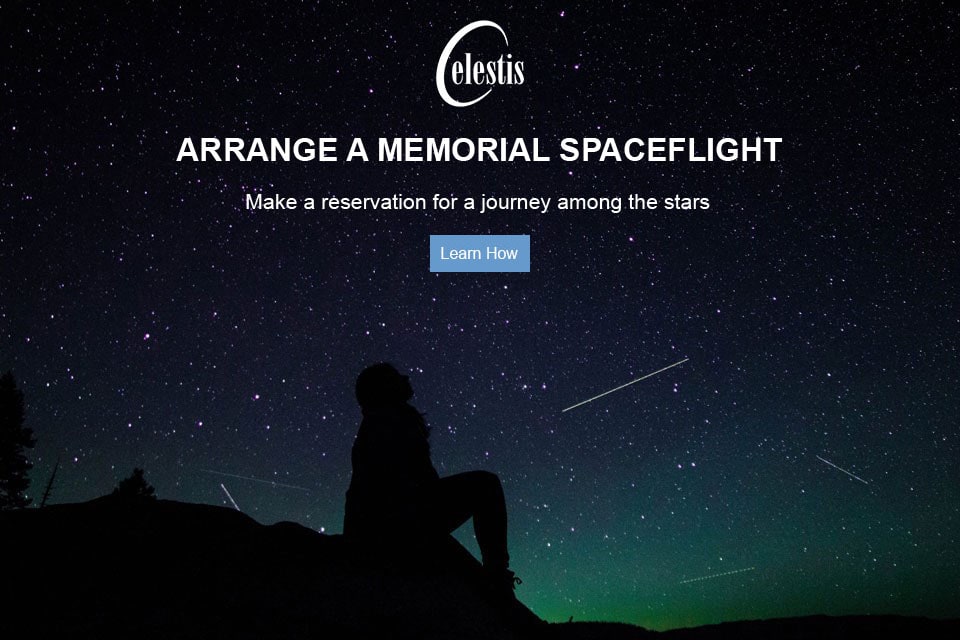Now, Voyager, Sail Thou Forth: The Origins of Celestis’ Voyager Service

Detail of Milky Way imaged by the Spitzer Space Telescope. Image credit: NASA/JPL/Caltech
The untold want, by life and land ne’er granted,
Now, Voyager, sail thou forth, to seek and find. – “The Untold Want,” Walt Whitman, Leaves of Grass
The word “Voyager” conjures visions of long journeys by sea and, of course, Star Trek®. Moreover, the famous Voyager spacecraft, launched in 1977, completed the interplanetary “Grand Tour” en route to interstellar space. The word is defined as “someone who goes on a long trip…Historically, voyagers have often been explorers.” It’s the perfect name for Celestis’ deep space service since it boasts no shortage of intrepid explorers.
Celestis Memorial Spaceflights’ first Voyager Service mission, the Enterprise Flight, has origins that can be traced to well before the company was founded in 1994. Memorial spaceflights were a concept envisioned by the president of Celestis’ parent company during the mid-1980s, as there was already a demand to send people’s ashes into space. Even though Space Services Inc. of America’s Donald K. “Deke” Slayton could not fulfill memorial spaceflights during his lifetime, former SSIoA employees Charles M. Chafer and R. Chan Tysor persisted with Slayton’s vision, founding Celestis, Inc. in 1994. While Celestis’ first mission, 1997’s Founders Flight, fulfilled the company’s first Earth Orbit Service, flights into deep space were always part of the company’s slate of services.
Fast forward to the present: United Launch Alliance’s (ULA) brand new Vulcan Centaur launch vehicle will loft not one but two Celestis missions beyond low Earth orbit. One mission is the Tranquility Flight, which will be attached to Astrobotic’s Peregrine Lunar Lander, the world’s first commercial lunar lander. At long last, the second mission will fulfill Celestis’ deep space mission profile. The Enterprise Flight will establish Enterprise Station, a historic first outpost representing humanity in deep space.
Space Services Inc. of America (SSIoA) and the Celestis Group of Melbourne, FL
In September 1982, SSIoA electrified the world with the Conestoga 1 launch from Matagorda Island, Texas, which marked the first successful launch of a privately-funded rocket. This achievement marked the beginning of the commercial Space Age; spaceflight was no longer strictly the domain of government-funded space agencies and the military. The idea of making space accessible and affordable to all began to propagate decades before SpaceX, Blue Origin, and Virgin Galactic espoused similar ideals.
One early visionary who saw that Earth’s traditions would eventually extend to space was Krafft Ehricke, the rocket scientist who devised the Centaur high-energy upper stage and father of the “Extraterrestrial Imperative.” Ehricke had long envisioned his own kind of “extraterrestrial imperative”; obituaries upon his death in December 1984 expressed that he wished to have his ashes launched into outer space. SSIoA’s president, former NASA astronaut Deke Slayton, was already working with the Celestis Group of Melbourne, Florida, to meet requests such as Ehricke’s.

Deke Slayton circa mid-1980s with a print of SSIoA's Conestoga launch vehicle. Photo supplied by Jim Frangione
Slayton wrote to Ehricke’s widow, Ingeborg, in May 1985: “I was [saddened] to hear of the passing of your husband. He was one of the few genuine pioneers in the space business. [Former astronaut] Wally Schirra tells me that Mr. Ehricke wanted his ashes sent into space at an appropriate time. Since we are dealing with an organization who hopes to do that in the not too distant future, I thought I should at least make sure you were aware of that opportunity.” Indeed, Jane’s Spaceflight Directory 1986, one of the era’s top space industry publications, reported, “An additional plan, announced in early 1985, is to use Conestoga for ‘space burials.’ The Celestis Group of Melbourne, Fla., would pay Space Services $14.5 million per launch and charge $3,900 each to place 2in-long capsules of cremated ashes into a 3,000 km [1,864 miles] orbit.” However, the idea of memorial spaceflights during that time fell through due to governmental roadblocks at the state level.
Sadly, Slayton died in 1993 due to complications from brain cancer before any memorial spaceflights could leave the ground. But in 1994, SSIoA’s Chafer and Tysor founded Celestis, Inc. partly to fulfill Slayton’s vision. From its beginnings, Celestis offered four types of missions to people seeking to memorialize loved ones or for those yearning to preplan their memorial spaceflights: Earth Rise (suborbital), Earth Orbit, Luna (Moon), and Voyager (deep space). During Celestis’ first mission, April 1997’s Founders Flight, the company kept its promise to Slayton…and made a new one to Majel Barrett Roddenberry, the widow of Star Trek® series creator Gene Roddenberry.
From the Founders Flight to the Enterprise Flight
The Founders Flight was Celestis’ first Earth Orbit Service mission that carried the ashes of 24 brave passengers, including Ehricke, 1960s counterculture figure Timothy Leary, space settlement pioneer and author of The High Frontier: Human Colonies in Space Dr. Gerard K. O’Neill, and Gene Roddenberry. Celestis co-founder Chafer had read about Roddenberry’s ashes being previously flown aboard a Space Shuttle mission: “I had read Roddenberry’s biography, and it discussed NASA shuttle astronaut Jim Wetherbee’s decision to take a portion of Roddenberry’s remains in his personal astronaut flight kit…but it was all kept quiet until Majel Roddenberry revealed it after the flight. As we were building our first mission during the 1994 – 1995 time frame, I thought, ‘Wouldn’t it be great since some of his ashes came back if we flew some of Gene Roddenberry on our first flight?’” Through networking, Chafer contacted Majel: “She agreed it would be a cool thing…and she said yes.”


Majel and Gene Roddenberry, the first family of Star Trek®.
Majel attended the Founders Flight pre-launch activities and had a special request for Chafer: “Celestis sponsored a gathering of family members, and Majel came…that’s where first I met her. She said, ‘You know, Charlie, the reason I told you yes is that I promised myself that when it was my time ago, I’d go on a forever space flight.’ And I said, ‘I think we’ll be able to do that at some point.’” She added, “When the time comes, let me know if you’ll be able to fly [me and Gene] together.”
Chafer promised Majel that he would fulfill her dream of a “forever space flight” alongside her beloved Gene. “So, I said yes, having no idea then how to fulfill it, but I was confident in the upward – even back then, during the mid-Nineties – trajectory of commercial space missions. I said to her, ‘Yes, certainly, we’ll be able to do that.’ She actually said that in a couple of interviews.” At the time of her passing in 2008, Chafer was invited to Majel’s memorial service, where Gene and Majel’s son, Eugene “Rod” Roddenberry, announced his parents’ deep space plans. “At the time of her passing, her son, Rod, who was aware of the agreement and enthusiastically supported the agreement, invited me out to her funeral service…Rod actually announced from the stage, ‘Mom’s going to fly with Dad on a deep space mission.’ I’m honor-bound because I promised Majel for several years that I’d find the ability to fulfill her request. The coming of this mission…represents to me a full circle. That’s the genesis of Voyager.”

Majel Barrett Roddenberry and Charles M. Chafer at Celestis' Founders Flight. Photo credit: Celestis
Fast forward to the present, and preparations for the first Voyager Service mission, the Enterprise Flight, are underway. The Enterprise Flight will fulfill Celestis’ Voyager Service for the first time in the company’s 28-year history. According to a previous Celestis blog post, “Following its launch, the Centaur stage will leave Earth’s field of gravity en route to Peregrine’s Trans-Lunar Insertion (TLI) orbit. Once Astrobotic’s Peregrine Lunar Lander has separated from the Centaur upper stage, it will continue its journey to the Moon (and fulfill the Tranquility Flight). Shortly after Peregrine’s separation, the Centaur upper stage carrying the Enterprise Flight crew will be restarted, beginning its journey beyond the Earth-Moon system into the Solar System.” Once the Enterprise Flight’s stable orbit is established, it will be renamed Enterprise Station.
Enterprise Station will serve as the world’s first outpost representing humanity – with its memorial flights, DNA, and data – in deep space.
A Promise Kept
Just as the Founders Flight fulfilled Deke Slayton’s dream of memorial spaceflights, Celestis’ Enterprise Flight marks a longtime promise kept. It will also be the ultimate Star Trek® tribute mission as Gene, Majel, and the DNA of son Rod Roddenberry will fly with the original series’ “Mr. Scott,” James Doohan. In addition, former scientist-astronaut Dr. Philip Chapman, NASA’s first Australian-American astronaut, will make his second memorial spaceflight. With the addition of DNA spaceflights to Celestis’ slate of services, anyone – regardless of burial disposition – can join the Enterprise Flight to make their own trek to a place where no man or woman has gone before.
Spots are still available on the Enterprise Flight. Give your loved one a truly “out of this world” tribute, or come fly your DNA beyond the Earth-Moon system aboard Enterprise Station. Please visit our Enterprise Flight web page or contact us for more information.



